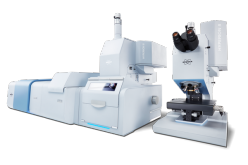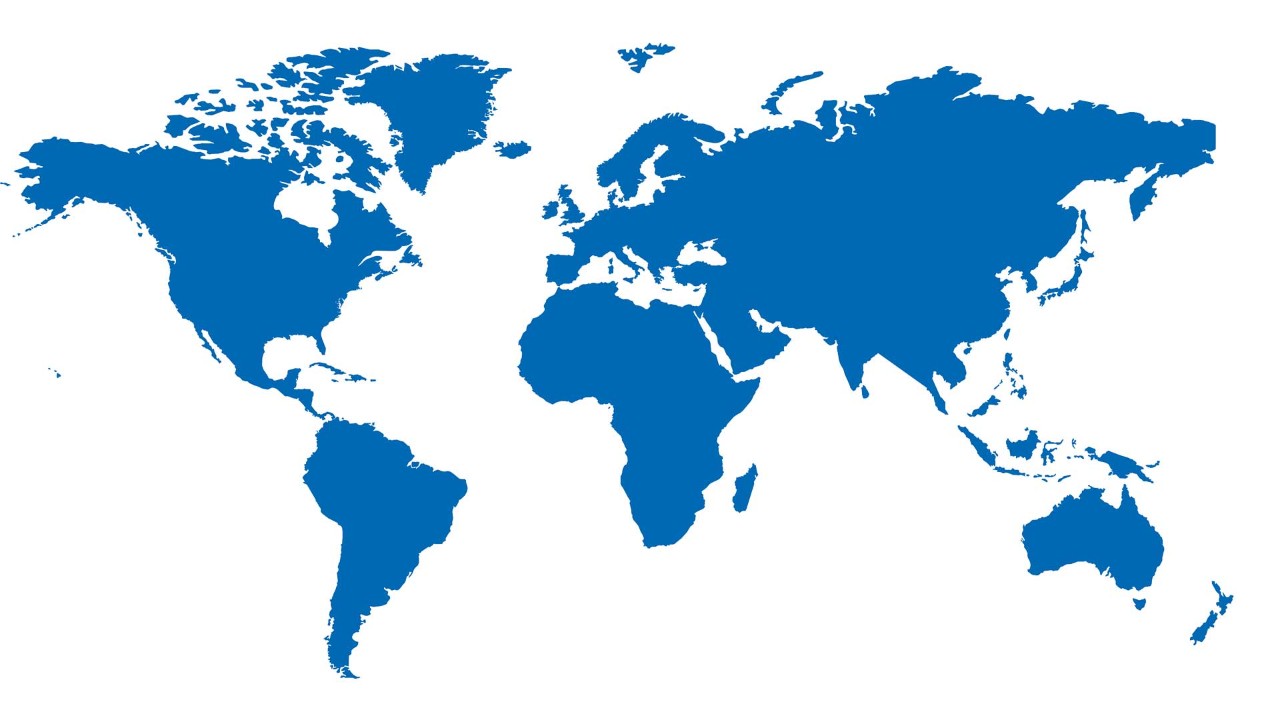HYPERION II
FT-IR meets QCL
分析能力和创新

命运
IR显微镜和成像研究平台
What's new with HYPERION II:
How we integrated infrared laser imaging:
Our patented spatial coherence reduction:
FT-IR显微镜由QCL增强|红外激光成像
The HYPERION II is an innovation force in infrared microscopy. It provides IR imaging down to the diffraction limit and sets the benchmark in ATR microscopy. It combines FT-IR and Infrared Laser Imaging (ILIM) microscopy for the first time ever in a single device, offering all three measurement modes: transmission, reflection, and ATR.
HYPERION II features:
- Selection of detectors for µ-FT-IR:
Broad-, mid, narrow-band LN2-MCTs,
thermoelectrically cooled (TE) MCT. - Focal-plane array detector for infrared imaging (64 x 64 or 128 x 128 pixel).
- 激光红外成像模块的可选QCL实现(ILIM,LASER 1类)
- 目标镜头选择:3.5x/15x/36x/74x IR,20x ATR,15X GIR,4X/40X VIS。
- Spectral range extension – from Near-Infrared (NIR) to Far-Infrared (FIR)
- Selection of apertures: manual knife-edge, automated knife-edge aperture wheel. Metal apertures for NIR
- 配件和样品阶段的选择:宏IR成像配件,冷却/加热阶段,样品室等。
- 视觉/光学工具的选择:暗场照明,荧光照明,偏振器,IR偏振器等。
Hyperion II提供:
- Perfect match of spectral and visual images. Applies to any measurement mode (including ATR imaging).
- Diffraction limited high sensitivity FT-IR microscopy and imaging by using focal plane array (FPA) detector.
- (可选)红外激光成像模块(ILIM,LASER 1类),FT-IR和QCL技术的首次组合。
- Infrared laser imaging in all measurement modes (ATR, Transmission, Reflectance).
- Patented coherence reduction for artifact free Laser Imaging measurements without sensitivity or speed loss.
- High imaging speeds:
0.1毫米2每秒(FPA,全光谱)
6.4毫米2per second (ILIM, single wavenumber) - Optional TE-MCT detector to perform IR microscopy with high spatial resolution and sensitivity without liquid Nitrogen.
- Emission spectroscopy capability and optional spectral range extensions.
HYPERION II applications:
- Life science | cell imaging
- Pharmaceuticals
- 发射率研究(例如LED)
- Failure and Root Cause Analysis
- Forensics
- Microplastics
- Industrial R&D
- Polymers & Plastics
- Surface characterization
- 半导体
características
FT-IR研究显微镜用于开拓者和创新者
像Hyperion II这样的IR显微镜几乎没有任何IR显微镜体现我们的用户:
Flexible, precise, configurable, adaptable, and always at the limit of what is possible.
完全控制
Above all, it is about having complete access to an instrument. Access to the experiment, the samples, and the parameters. This is the foundation of the HYPERION II and its most valuable asset: providing full control.
Whether FT-IR measurements in single point mode, mapping or imaging with different detectors or objectives, special sample stages or with ATR or Grazing Angle objective. At any point you can influence the outcome of your results - and make them better.
This is the clear difference to ourLUMOS II IR microscope. Where the LUMOS II relieves the user of tedious experimental details and automates the measurement process, the HYPERION II remains a precise tool that only does what the user demands.
A Monument to its Past
许多用户通过其前身知道Hyperion II及其优势。在将近20年的时间里,它一直是IR显微镜和成像中的创新力量。使Hyperion成为出色的FT -IR显微镜的事物仍然存在 - 只有更好,更快,改进。
Hyperion II继续在日常研究中具有您需要的所有功能:液氮和热电学冷却的MCT,焦平面阵列成像探测器,视觉和红外增强工具,当然还有大量专用配件。
最后,我们希望再次在FT-IR显微镜和成像中设置基准测试,并通过引入新的令人兴奋的技术,同时保持建立和有价值的方法,从而成为创新领导者的名字。
Augmenting FT-IR by Infrared Laser Imaging (QCL)
单个乐器中的QCL和FT-IR
For the first time, users can access an IR microscope that combines FT-IR and QCL technology in one instrument. With this, we are opening a completely new door to life science and material research.
收集FT-IR光谱,选择要使用QCL调查的波长,并在几秒钟内创建令人惊叹的化学图像。
借助FT-IR和红外激光成像的全新方法,我们最终为用户,研究人员和科学家提供了开发新应用程序的工具,同时也可以改善已建立和验证的方法。
A true QCL microscope with exceptional performance
The HYPERION II offers uncompromised QCL microscopy in a state-of-the-art FT-IR microscope. In fact, we have specifically developed and patented a novel coherence reduction technology to enable unparalleled IR laser imaging performance - without digital post-processing.
To illustrate: In classical FT-IR, spatial coherence does not play a role. In IR microscopic measurements with a QCL, however, spatial coherence phenomena inevitably occur. These fringes and speckles in IR images and spectra are generally considered to be harmful for chemical imaging (see adjacent; DOI:10.1002/jbio.201800015).
Indeed, it is not trivial to separate the sample's chemical information from the physical information describing the phase relationship of the scattered photons. The HYPERION II addresses this problem pragmatically and solves it by smart hardware design and lets you acquire artifact-free chemical imaging data.
比较FT-IR和QCL光谱法
比较这些技术将暗示两者都可以同样地执行相同的任务 - 一种流行的误解。FT-IR和红外激光成像具有明显的优势,并且只有两者的实际组合才能取得最佳效果。
我们知道,大多数科学家和研究员want to miss the universality of FT-IR. They don’t like being restricted to a single, cutting-edge technique without point of reference. Fortunately, the HYPERION II can be considered both: an exceptional FT-IR imaging microscope and an ambitious QCL microscope.
我们有解决这二元性和QCL techn的地方ology records data significantly faster at the same signal to noise, it is still limited to a small range of the MIR. Again, we stay true to the concept of the HYPERION II. You choose. You have full control.
Aplicações
IR显微镜应用(FPA,MCT,QCL)
Biological Tissue Analysis
材料科学
Drug Development
Geology and Mineralogy
Forensical Sciences
Microplastic Analysis
Acessórios
红外抽样配件和客观镜头
Validation Plate
MicroVice Sample Holder
ATR宏成像配件
Filter Holder
Heating and Cooling Stage
3.5x Imaging Objective Lens
Standard Transmission Objective Lenses
ATR Objective
放牧角度目标
钻石压缩电池
Notícias e Eventos
OPUS Release 8.7 | HYPERION II | Q3 2021
New Feature:High Performance Chemical Image Generation by New Adaptive K-means Clustering Function
This new function is the logical next development step for our well known Cluster analysis function.The Adaptive K-means Clustering Function is based on a new algorithm, which enables a non-supervised and autonomous determination of spectral variance within your imaging or mapping results.
- Forecasting or time consuming searching of the included amount of chemical classes is no longer been necessary as the algorithm can predict all included chemical classes by itself.
- This major function is important for all kind of chemical imaging and distribution analysis of unknown samples or small structures within larger datasets.
- Make analysis and evaluation is as easy as possible and safes your valuable time and nerves.
New Feature:“Cluster ID” Function for Identification of Classes in 3D Spectral Data
我们的新群集ID函数可以使用Opus函数在成像和映射数据中识别簇:库中的频谱搜索,快速比较或身份测试。
- Easy determination of the chemical identity of classified sample components for particles, layers in laminates, components of pharmaceutical tablets and other inhomogeneous materials.
- Reliable and comprehensive statistics reports about quantity, size and of course identity of all analyzed structures is provided and leads particle and technical cleanliness analysis to a new, autonomous level.
Updated Feature:“查找粒子”功能现在包含一种新型的粒子检测方法
The proven "Find Particle" software can now be applied to both: the visual and the IR image. With this updated feature, you are able to do particle detection based on chemical images that were measured by the LUMOS II.
- While particle recognition for low contrast structures and off-white/transparent particles/fibers on off-white filter membranes can be tedious, a postrun particle determination based on the chemical IR image allows you to determine quantity and size of particles from your imaging or mapping results.
Mais informações
文学室
Learn more about our FT-IR microscopes and solutions by downloading related literature.


